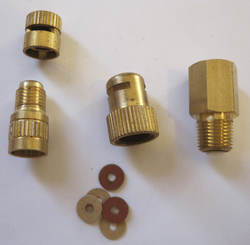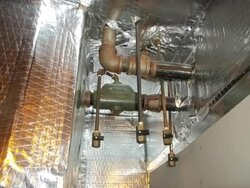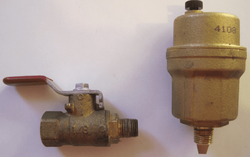Here are a few add on for air vents. On the left is an anti- vacuum cap. If you have a problem with air re-occuring it may be getting sucked into you system due to a piping problem. This cap allows air out, but not in.
The middle is a hygroscopic safety cap. It replaces the standard cap as a second level of protection. If fluid leaks past the shut off mechanism, this cap has a series of discs that swell within seconds of the fluid touching them, giving you a second protection. Installers commonly install these on air vents locates on equipment above finished ceiling, for example.
The 3rd is a check valve that allows you to remove a vent for service, cleaning, or replacement.
hr
The middle is a hygroscopic safety cap. It replaces the standard cap as a second level of protection. If fluid leaks past the shut off mechanism, this cap has a series of discs that swell within seconds of the fluid touching them, giving you a second protection. Installers commonly install these on air vents locates on equipment above finished ceiling, for example.
The 3rd is a check valve that allows you to remove a vent for service, cleaning, or replacement.
hr




